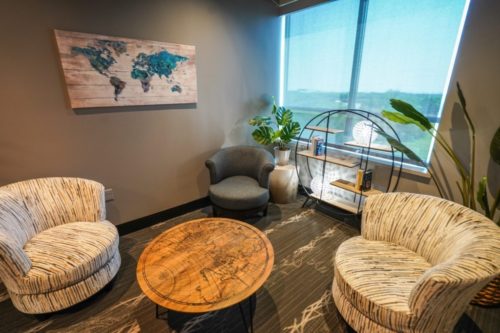Coworking in 2022 – The Future of Workspaces
How the pandemic has changed how the world does business
Traditional offices appear to have been indisputably altered by the pandemic, perhaps forever. More people are wanting a flexible office space and schedule, as they experienced during quarantine. That’s why many companies are offering more remote work, hybrid offices, and allowing employees to make their own schedules. This is not very different from how coworking spaces operate.
How Work Gets Done Post-Pandemic
According to an interview with the New York Times, Grant Christofely, North American associate director of workplace strategy at M Moser Associates, a workplace design company, some organizations still design their offices the same way they did 50 to 70 years ago: static, inflexible spaces where employees perform individual, task-oriented work for eight hours or more per day.
“But that’s not how work gets done, how you make money today,” he said. “You make money from ideas being exchanged. And technology has had a huge impact on the way people work, the way ideas are exchanged. The way ideas were exchanged was changing before the pandemic — people are realizing that the time to change is now.”
Since the pandemic, many buildings that housed offices have been converted to coworking-like spaces due to people working remotely. The dynamic for landlords has changed and they’re having to adapt to fill office spaces.
Many businesses are providing standing or mobile desks, portable technology to work where needed, virtual meetings — a more flexible office environment all the way around.
Flexibility is Key
John Harrison, design director of the Houston office of Gensler, the architectural firm, told NYT he believes “the biggest shift in the post-pandemic workplace will be the radical change in flexibility. People’s behavioral habits are going to be different. The physical office must accommodate that in a forward-thinking, creative way,” he said. What will emerge will be “a blended workforce where some people will work from home, some in the office on certain days,” he added.
To make offices attractive to those who choose to work there either occasionally or full-time — rather than at home — companies are creating spaces for employees to socialize and meet, either in person or virtually.
People are better supported when things are movable and changeable, with more options for places to work throughout the day. The workplace needs to become more adaptable and responsive to what individuals and teams are doing. Offering different areas to work, mental break options, and relaxation spaces are also becoming a thing in the traditional office setting.
Evolution
An office is no longer a one-size-fits-all place. The new office environment must continually be evolving. Of course, coworking spaces have known this all along.
Embrace the Future of Coworking
The transformation of workspaces in response to the pandemic is an enduring shift that promises a more adaptable and flexible future. Embracing this evolution allows individuals and organizations to thrive in a dynamic work landscape. It’s crucial to prioritize flexibility, leverage technology, and foster well-being to navigate this new era successfully. So, dear readers, seize the opportunity to reshape your work environment, stay agile, and welcome the exciting possibilities that the future of workspaces holds.
Looking for a coworking space to call home? Schedule a tour of NuvoDesk Coworking.
